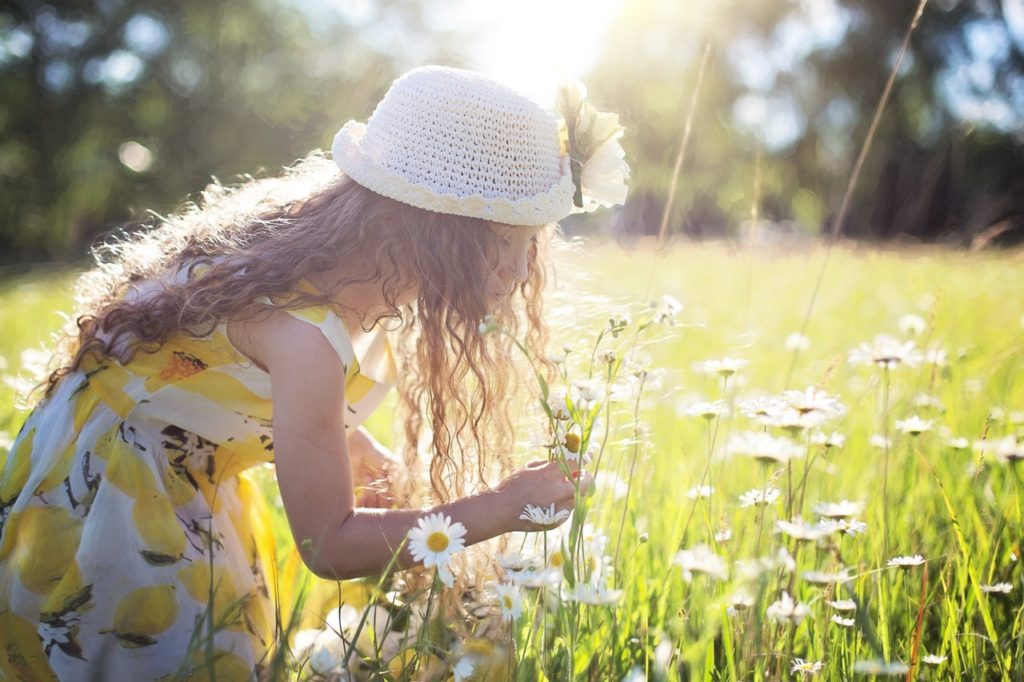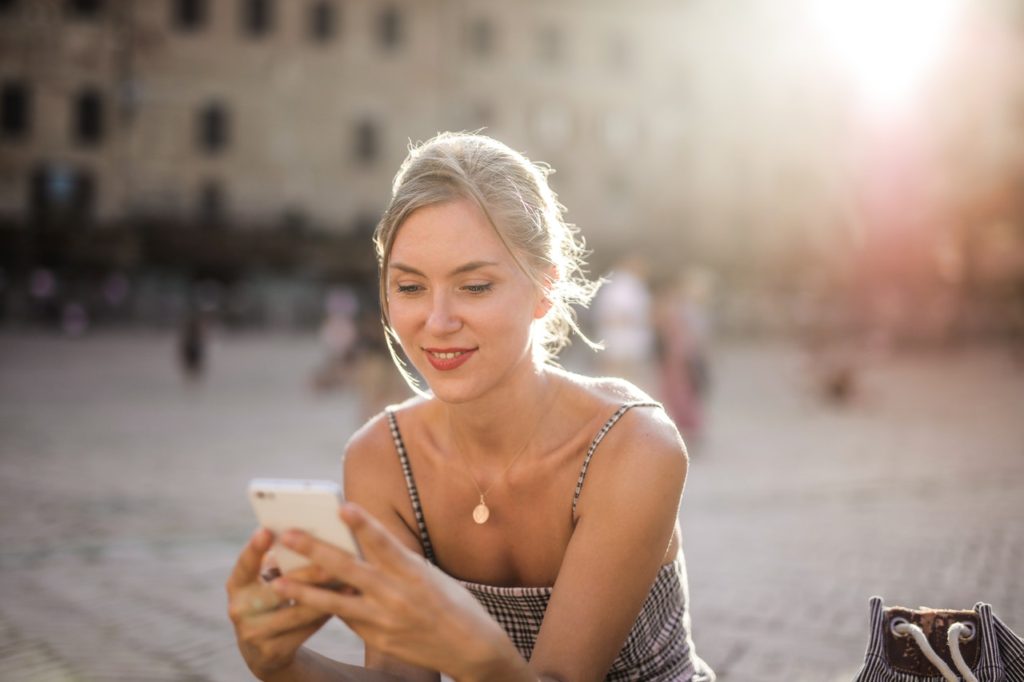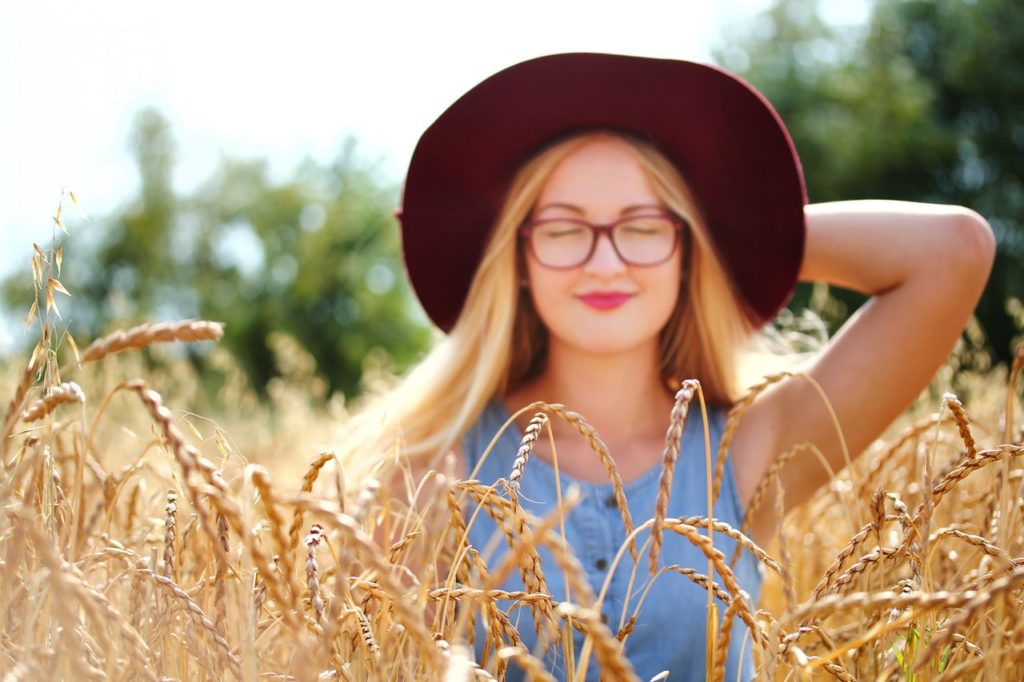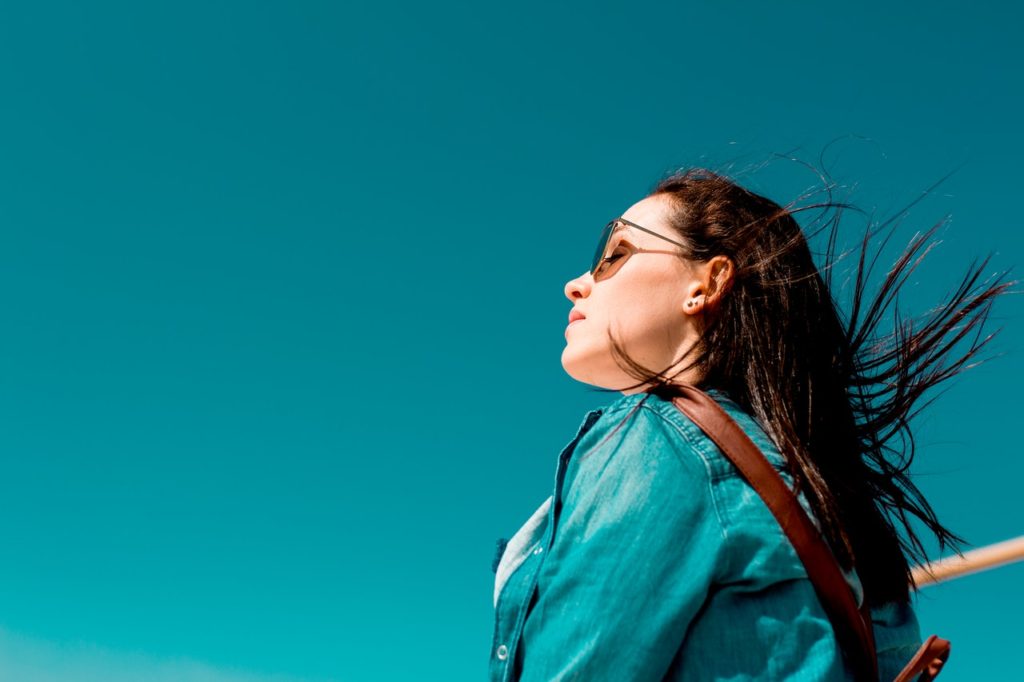Table of Contents
Shooting in Direct Sunlight
Sometimes, it may not be easy to find usable shadows around. When shooting at noon, this is inevitable. But you can let the object create its own shadow.
Rotate the subject to find a good angle, so that the sun shines directly behind the subject’s head, so that the person’s face is naturally in her own shadow.
Rotating the subject to find a good shooting angle for shooting is not as easy as imagined. Using this technology will also make the subject’s shoulders and head areas appear too bright. To avoid shadows on the face, make sure that the person’s face is fully exposed.
It is best to use center-weighted metering or spot metering, and you can also use exposure compensation +2/3 aperture, or both.
It is also worth noting that direct sunlight falling behind the subject may cause the lens to shine. Therefore, it is necessary to properly shield the lens (translator’s note: you can use a hood) to prevent lens flare.
Let the child face the sun so that his face is completely in shadow, so that he can see his eyes and face. The ISO is 200, the exposure time is 1/640, the aperture is f/5, the exposure compensation is +2/3, and the white balance is set to shadow.
If the direction of light is not just the direct light from the top of the head, it is helpful to make good use of light from other directions according to local conditions to highlight the characters in the photo. When the light is low in the sky, it is a good choice as a backlight. The low light is projected behind the object, so that the edge of the object is surrounded by a touch of bright color.
The contour light makes the hair look very conspicuous, where the white balance is set to shadow and the ISO is set to 100. The exposure time is 1/320 second, the aperture is f/2.8, and the exposure compensation is +1/3 gear.
Such a scene is suitable for lens flare, but remember that the specific exposure must be for the face, otherwise the exposure is based on the hair, then the face may be underexposed. Setting up the camera to increase the aperture by 1/3–1/2 stops overexposing can be helpful.
Create Better Lighting
Above we introduced how to look at the light better to take an infectious photo, and then we will learn how to create your own lighting. With the help of a few gadgets and tips, you can create better lighting effects and further increase the spatial effect of light in photography.
In fact, in some types of outdoor photography, shadows can help create the contours of objects and produce some dramatic effects. However, in portrait photography, shadows should never appear under normal circumstances.
How to Use Fill Light
To put it simply, fill light is fill light, in fact you are trying to add light to the shadows. If the contrast of light and dark on the face is too strong, it will usually seriously weaken the expressive power of the portrait. In fact, the problem of using a simple mirror can be solved. The light can be returned to the shadow through the mirror, thereby increasing the brightness of the scene, making the details of the face of the person clearly visible.
In fact, there are no restrictions on the reflective equipment, as long as it can reflect sunlight into the scene-a piece of white cardboard or white foam cushion, a cloth covering a frame, a person wearing a colored shirt, or It is a commercial reflector that can be used as a reflector.
Among them, the most popular reflective device is a floppy disk, which is available in white, silver and gold. The disk can be unfolded by a plastic frame. When not in use, the plastic frame can be folded and the disk can be placed in a small bag.
It may take some time to learn how to use the reflector. It is recommended that you find someone to hold the reflector or find a stand and clamp. The easiest way to use the reflector is to backlit the subject, and then aim the reflector at the subject’s face.
Keep the reflector under the light and move it around. In bright sunlight, it is obvious that the reflected light will hit the subject. In low light conditions, things may not be that simple.
Pay attention to the angle of the reflector and how to adjust the angle according to the position of the sun and the person. In some cases, the reflector is almost horizontal (it will be at a 180-degree angle to the ground), sometimes it is almost completely off the person, and sometimes it is directly facing the object. If you can’t see the light hitting the subject, first make the reflector face the sun, and then slowly rotate the reflector toward the subject. Generally speaking, between these two points (the sun and the object), you can find a point with the most ideal reflection effect.
In addition, by comparing the before and after use of the reflector in the scene, it will help determine the amount of light needed to fill the shadows. In many cases, if sufficient effects are not obtained, the reflector needs to be brought closer to the object.
The reflector material is different, the reflected light will also be different. The reflective effect of the silver reflector is much worse than that of the white reflector, and the reflected light of the golden reflector is relatively warmer. In the image above, you can see that a white reflector is used in an extremely backlit scene.
You don’t have to go outside and try it yourself, just think about the reflection effect of the golden reflector and the silver reflector. But if you want to test the real effect, you can wrap a piece of thick cardboard with tin foil and spray white or gold paint on one side. You can also go to a hobby store to buy a gold or silver matte board.
No matter which method you choose, you only need to spend less than $10, which is enough to show the reflective effect obtained by using other reflective materials.
Through a simple white cardboard, the light is reflected into the shadow of the backlit portrait scene. Exposure index: ISO is 200, exposure time is 1/250, aperture is f/5.6.
In some cases, the mirror only reflects a small part of the light, so that the light does not appear too monotonous. In addition, it also helps to maintain the exposure level so that the background is not too overexposed.
Even when the mirror is placed in a darker area, bringing the white mirror close to the subject will illuminate a small part of the scene.
How to Use Fill Flash
At noon when the sun is shining brightly, turning on the flash seems unnecessary and unnecessary, but for a rookie, turning on the flash in all situations may be the best way to take good pictures.
When people are in a darker environment (especially under the sun), the shadow area can be filled with the help of flashlight, while ensuring that it will not cause any impact on the bright area. The flash just makes the exposure of the shadow area closer to the exposure of the illuminated area, and the exposure of the entire image is more balanced.
Sunlight shone on this woman from the left, casting his (her) eyes and half of his face into shadow. But if you put a flash on it, the shadows will “clouds and mists”. Exposure index: ISO 200, shutter speed 1/640 second, aperture f/4.
Today’s digital cameras, software technology has been quite advanced, the camera can fully automatically balance the flash and sunlight, so as to obtain the best exposure index. However, just a few years ago, photographers/photographers had to use charts and histograms to perform complex calculations based on factors such as flash subject spacing, ambient exposure, and flash output level; the fact is that the flash has entered the “settings” Good; don’t worry about the state of “no longer.”
The flash flashes. Within milliseconds after the shutter is released, the light-sensing element and the computer can accurately determine the light required for the correct exposure, and then make the flash fire accurately.
In addition, the use of flash fill for portraits can well add a little life to the characters. Even if the subject is in good light quality, it is okay to use flash fill on the subject outdoors. After turning on the flash, you can illuminate the face of the character, make the eyes sparkle with a smart light, and let the hair show some luster and soft shadows.
In the image, the exposure index is: exposure time 1/250 second, aperture f/5, ISO 100. The light meter gives the specific guide number, the flash accessory is set to TTL metering, and the flash exposure compensation is set to –1/3 to reduce the flash brightness.
During the day, when the light becomes weak, you can use the fill flash to light the object so that the object does not appear as a silhouette. The role of supplemental light is especially obvious when shooting against the light at sunset. In the image above, the daylight behind the subject is very bright, so the exposure index should be set according to the background to maintain the tone and color richness of the entire picture.
Using the flash in TTL mode can keep the flash brightness consistent with the background exposure brightness. If the subject appears too dark or too bright relative to the background, using flash exposure compensation can increase and decrease the size of the flash intensity.
Silhouette Lighting
Just like in a sunset scene, when the subject is placed in front of a bright background, the person will almost always appear as a silhouette when shooting. Sometimes it is necessary to use a little bit to fill the flash, as shown in the figure below. It is very important to set the index that allows the background to be correctly exposed. Manually set the exposure between the frames (Translator’s Note: metering scene and actual shooting scene).
In the above scene, the background sky appears too dim, and the shooting is based on its normal exposure value, and no details of the subject can be seen.
The brightness of a dark subject is very important. However, if you just blindly fill in the light to highlight the object, the effect is not ideal. In this case, you can use flash exposure compensation to set the intensity of the flash to –2/3 steps while keeping the exposure value unchanged.
To further ensure that only a small amount of flash hits the subject, manually enlarge the reflector to a long focal length In addition, the head of the flashlight should be tilted upward so that the light only hits the subject’s head.
When you use the camera to take a low-angle shot of an object against a dark cloud background, silhouettes will inevitably appear. Using a little fill flash can show the details of the shadow without sacrificing the dramatic effect of the image.
Flash Sync Speed
The flash sync speed is the shutter speed when the flash fires. In most cases, the fastest shutter speed that can be used with the flash is about 1/125 second or 1/250 second, but the specific speed needs to be determined by consulting the user manual. If the actual exposure time does not meet the flash synchronization speed, digital cameras equipped with built-in flash and special devices will usually not flash.
After the shutter is released, the first leaf (curtain) opens the shutter; the second leaf closes the shutter. Increase the shutter speed to the maximum flash synchronization speed. Within a fraction of a second of the shutter speed, the shutter curtain will be fully opened. At the same time, the shutter speed is the time from when the shutter is pressed until the flash fires.
If the shutter speed is greater than the fastest flash sync speed, the shutter curtain will actually start to close when the opening blade is not fully opened, thereby blocking the flash from entering the lens. This will cause black bands to appear throughout the image.
However, sometimes a slower shutter time is preferable, especially in the case of lower brightness. In most cases, when the sky gets dark, the camera’s default flash synchronization time is 1/60 second. This synchronization time may be destined to produce a very dark background.
By using manual exposure (but still keeping the flash set to automatic mode), the photographer can reduce the shutter speed to the desired speed to obtain the desired background brightness. But remember that as the shutter speed becomes slower, the camera shake will increase accordingly, resulting in blurred images. Some cameras allow you to set the default shutter time to any value in the open interval of “the fastest flash sync time to 1 second”.
